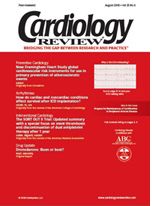Which intervention is best for a diabetic patient with suspected ischemic heart disease?
On June 8, 2004, a 62-year-old Caucasian man was referred to our cardiac catheterization laboratory for diagnosis and treatment of suspected ischemic heart disease. He had had diabetes for 5 years, and mild hypertension. Over the previous 4 months he had experienced intermittent brief episodes of chest discomfort and shortness of breath, commonly when he was under mental stress or during abrupt physical activity. His medications included lisinopril (Prinivil, Zestril), 10 mg daily, metformin (Glucophage, Riomet), 1,000 mg twice daily, aspirin, 81 mg daily, and simvastatin (Zocor), 10 mg daily. On physical examination he appeared slightly obese but was otherwise well. His cardiovascular examination was normal, his blood pressure was 132/65 mm Hg, and his pulse was 70 beats per minute. Standard laboratory studies including blood counts and renal function were within normal limits. The measured total cholesterol was 199 mg/dL, triglycerides 205 mg/dL, and high-density lipoprotein cholesterol 38 mg/dL. Calculated low-density lipoprotein cholesterol was 127 mg/dL and glycosylated hemoglobin A1C was 6.8%.
An exercise stress test with perfusion imaging had been performed 8 days before the visit. He exercised for 7 minutes and 20 seconds on a standard Bruce Protocol, stopping for fatigue and vague neck discomfort, achieving a peak heart rate of 140 beats per minute. The electrocardiogram at baseline was normal but at peak stress showed 1 mm
diffuse flat ST-segment depression. Perfusion imaging showed a large area of ischemia of moderate intensity involving the anterolateral left ventricle. Left ventricular function was normal and the calculated ejection fraction
was 58%.
Diagnostic coronary angiography was performed in standard fashion and revealed a high-grade stenosis, 85% to 90% diameter obstruction in the proximal left anterior descending (LAD) coronary artery. The lesion measured 16 mm in length, was mildly calcified, and spanned a small septal perforator branch. The reference vessel size distal to the lesion was 3.3 mm in diameter, while the proximal reference measured 3.6 mm. In the left circumflex system there was a moderately severe discrete lesion, 60% to 75% diameter stenosis in the mid-portion of the first obtuse marginal branch. This vessel had reference measurements of 3.0 and 3.2 mm. The rest of the coronary arteries showed diffuse luminal irregularities consistent with mild-to-moderate atherosclerosis. Left ventriculography was normal, with an estimated ejection fraction of 55%.
Percutaneous coronary intervention was carried out in standard fashion. A 3.5 x 23 mm sirolimus-eluting stent (Cypher) was placed in the LAD and a 3.0 x 13 mm sirolimus-eluting stent was placed in the first obtuse marginal branch with excellent angiographic results. The procedure was uncomplicated and a creatine kinase MB fraction the next morning was normal. The patient was discharged with instructions to continue clopidogrel (Plavix) for 12 months and to double the dose of simvastatin as tolerated.
Until recently, coronary artery bypass graft (CABG) surgery would have been the superior treatment in this patient with diabetes with double-vessel coronary artery disease of this type. Today, based on recently published data,1,2 we expect his risk of death or myocardial infarction over the next 3 years to be no different compared with CABG. Furthermore, his risk of restenosis is less than 10% for each lesion.3,4
